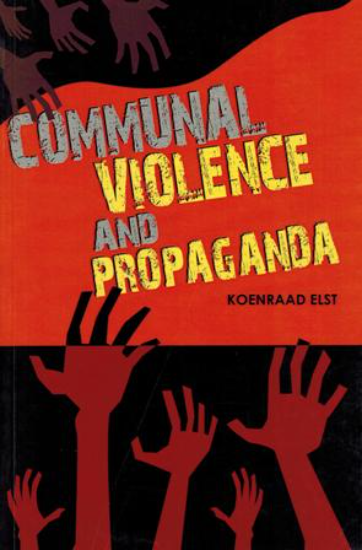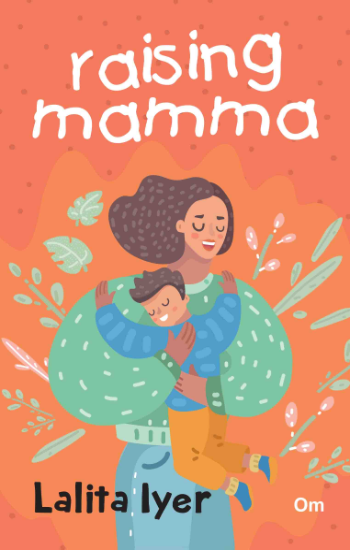
Save: 1%

Save: 10%
Catholic ashrams: sannyasins or swindlers? (enlarged edition with new appendices)
Publisher:
| Author:
| Language:
| Format:
₹390 ₹389
Save: 0%
In stock
Ships within:
In stock
| Book Type |
|---|
ISBN:
Page Extent:
The emergence of Catholic ashrams in several parts of the country is not an isolated development. These institutions are links in a chain which is known as the Ashram Movement, and which different denominations of Christianity are promoting in concert. The Protestants and the Syrian Orthodox have evolved similar establishments. Taken together, these institutions are known as Christian ashrams. Several books and many articles have already been devoted to the subject by noted Christian writers. The Ashram Movement, in turn, is part of another and larger plan which is known as Indigenisation or Inculturation and which has several other planks. The plan has already produced a mass of literature and is being continuously reviewed in colloquies, conferences, seminars, and spiritual workshops on the local, provincial, regional, national, and international levels. High-powered committees and councils and special cells have been set up for supervising its elaboration and implementation. What strikes one most as one wades through the literature of Indigenisation is the sense of failure from which Christianity is suffering in this country. Or, what seems more likely, this literature is being produced with the express purpose of creating that impression. The gains made so far by an imperialist enterprise are being concealed under a sob-story. Whatever the truth, we find that the mission strategists are trying hard to understand and explain why Christianity has not made the strides it should have made by virtue of its own merits and the opportunities that came its way. Christianity, claim the mission strategists, possesses and proclaims the only true prescription for spiritual salvation. It has been present in India, they say, almost since the commencement of the Christian era. During the last four hundred years, it has been promoted in all possible ways by a succession of colonial powers – the Portuguese, the Dutch, the French, and the British. The secular dispensation which has obtained in this country since the dawn of independence has provided untrammeled freedom to the functioning as well as the multiplication of the Christian mission. Many Christian countries in the West have maintained for many years an unceasing flow of finance and personnel for the spread of the gospel. The costs of the enterprise over the years, in terms of money and manpower, are mind-boggling. Yet Christianity has failed to reap a rich harvest among the Hindu heathens. Sita Ram Goel (1921-2003) took his M.A. in History in 1944, from the University of Delhi. He won scholarships and distinctions in school as well as college. Well-versed in several languages, he had studied the literature, philosophy, religion, history and sociology of several cultures-ancient, medieval and modern. For his judgements and evaluations, however, he drew his inspiration from the Mahabharata and Suttapitaka, Plato and Sri Aurobindo. He had written several documented studies on Communism, Soviet Russia, Red China, Christianity and Islam. Author of eight novels, he had translated into Hindi quite a few books from English, including some dialogues of Plato and a biography of Shivaji. His other works include compilations from the Mahabharata and the Suttapitaka. Having become a convinced Communist by the time he came out of college, he turned against this criminal ideology in 1949 when he came to know what was happening inside Soviet Russia. From 1950 onwards he participated in a movement for informing the Indian people about the theory as well as the practice of Communism in Stalin’s Russia and Mao’s China. The numerous studies published by the movement in the fifties exist in cold print in many libraries and can be consulted for finding out how the movement anticipated by many years the recent revelations about Communist regimes.;
1 review for Catholic ashrams: sannyasins or swindlers? (enlarged edition with new appendices)
Clear filtersThe emergence of Catholic ashrams in several parts of the country is not an isolated development. These institutions are links in a chain which is known as the Ashram Movement, and which different denominations of Christianity are promoting in concert. The Protestants and the Syrian Orthodox have evolved similar establishments. Taken together, these institutions are known as Christian ashrams. Several books and many articles have already been devoted to the subject by noted Christian writers. The Ashram Movement, in turn, is part of another and larger plan which is known as Indigenisation or Inculturation and which has several other planks. The plan has already produced a mass of literature and is being continuously reviewed in colloquies, conferences, seminars, and spiritual workshops on the local, provincial, regional, national, and international levels. High-powered committees and councils and special cells have been set up for supervising its elaboration and implementation. What strikes one most as one wades through the literature of Indigenisation is the sense of failure from which Christianity is suffering in this country. Or, what seems more likely, this literature is being produced with the express purpose of creating that impression. The gains made so far by an imperialist enterprise are being concealed under a sob-story. Whatever the truth, we find that the mission strategists are trying hard to understand and explain why Christianity has not made the strides it should have made by virtue of its own merits and the opportunities that came its way. Christianity, claim the mission strategists, possesses and proclaims the only true prescription for spiritual salvation. It has been present in India, they say, almost since the commencement of the Christian era. During the last four hundred years, it has been promoted in all possible ways by a succession of colonial powers – the Portuguese, the Dutch, the French, and the British. The secular dispensation which has obtained in this country since the dawn of independence has provided untrammeled freedom to the functioning as well as the multiplication of the Christian mission. Many Christian countries in the West have maintained for many years an unceasing flow of finance and personnel for the spread of the gospel. The costs of the enterprise over the years, in terms of money and manpower, are mind-boggling. Yet Christianity has failed to reap a rich harvest among the Hindu heathens. Sita Ram Goel (1921-2003) took his M.A. in History in 1944, from the University of Delhi. He won scholarships and distinctions in school as well as college. Well-versed in several languages, he had studied the literature, philosophy, religion, history and sociology of several cultures-ancient, medieval and modern. For his judgements and evaluations, however, he drew his inspiration from the Mahabharata and Suttapitaka, Plato and Sri Aurobindo. He had written several documented studies on Communism, Soviet Russia, Red China, Christianity and Islam. Author of eight novels, he had translated into Hindi quite a few books from English, including some dialogues of Plato and a biography of Shivaji. His other works include compilations from the Mahabharata and the Suttapitaka. Having become a convinced Communist by the time he came out of college, he turned against this criminal ideology in 1949 when he came to know what was happening inside Soviet Russia. From 1950 onwards he participated in a movement for informing the Indian people about the theory as well as the practice of Communism in Stalin’s Russia and Mao’s China. The numerous studies published by the movement in the fifties exist in cold print in many libraries and can be consulted for finding out how the movement anticipated by many years the recent revelations about Communist regimes.;
About Author
1 review for Catholic ashrams: sannyasins or swindlers? (enlarged edition with new appendices)
Clear filtersVineet Kumar Singh –
Rated 5 out of 5If we compare with East Asia specially India the conquest of America, Australia, Africa by Christianity can be rightly termed as cakewalk. They felt strong resistance here. However, they observed that Indian held high regards for ascetics. Therefore, in the name of ‘indigenisation’ Christian Missionaries disguised themselves as Sanyasis as if they were Hindu Sanyasis. This book exposes sinister plan of Christian Missionaries establishing Catholic Ashrams, wearing saffron cloths, living ascetic life so that they can attract Hindu Mass towards them and ultimately converting them to Christianity.
This book also contains the letters exchanged by Swami Devananda Saraswati and Father Bede Griffiths who runs similar Catholic Ashram named Shantivanam, between Father Bede Griffiths and the author, between Father Bede Griffiths and Shri Ram Swaroop. This is very informative book and shows author’s deep study and profound knowledge of Christianity.




Vineet Kumar Singh –
If we compare with East Asia specially India the conquest of America, Australia, Africa by Christianity can be rightly termed as cakewalk. They felt strong resistance here. However, they observed that Indian held high regards for ascetics. Therefore, in the name of ‘indigenisation’ Christian Missionaries disguised themselves as Sanyasis as if they were Hindu Sanyasis. This book exposes sinister plan of Christian Missionaries establishing Catholic Ashrams, wearing saffron cloths, living ascetic life so that they can attract Hindu Mass towards them and ultimately converting them to Christianity.
This book also contains the letters exchanged by Swami Devananda Saraswati and Father Bede Griffiths who runs similar Catholic Ashram named Shantivanam, between Father Bede Griffiths and the author, between Father Bede Griffiths and Shri Ram Swaroop. This is very informative book and shows author’s deep study and profound knowledge of Christianity.